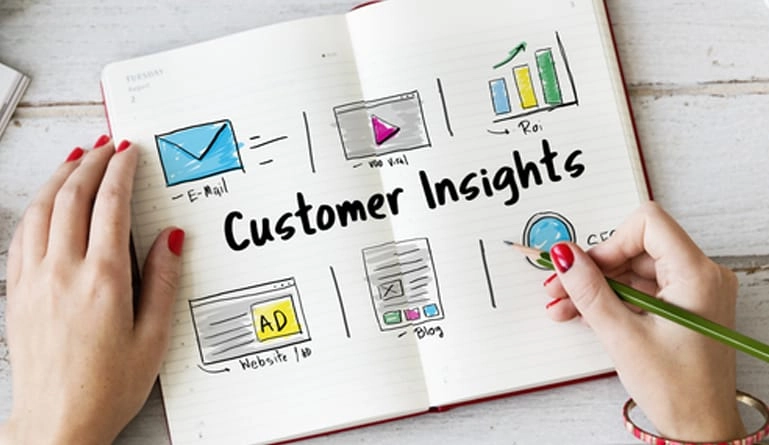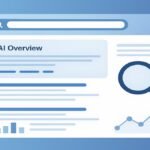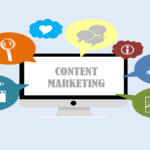The days of questioning why your consumers weren’t more involved, why a new product didn’t work out, or why they left your store before paying for their purchases are long gone, as customer insight tools are here.
There’s no need to wonder since sophisticated consumer intelligence tools are easily accessible. Gaining a thorough understanding of your clients, finding fresh ideas, and eventually providing better experiences is easier than ever. To help you save time and make sure your consumer research is really valuable, we’ve compiled a list of the best customer insight tools.
Top Customer Insight Tools

1. Google Trends
Google Trends is among the most widely utilized customer insight tools. This free tool allows users to delve into regional data, compare searchers, study and analyze search words across time, and access real-time data to identify trends.
Researchers and marketers may get a better understanding of current trends, consumer interest, and the most essential search phrases by using Google Trends. Google Trends data may be used to improve website metadata, provide engaging content that attracts customers, and generate items that are very relevant to the modern market.
Features:
- Data Visualization.
- Data Discovery.
- Dashboard.
- Natural Language Search.
- Predictive Analytics.
- Data Connectors.
Price:
- Price per task: $0.00225.
- Price per 1M keywords: $450.
2. Google Analytics
Google Analytics is another one of the best customer insight tools and Google services. It enables researchers to monitor and examine how users interact with applications and websites. This may provide important insights into how people behave while engaging with the web content of your business.
Numerous topics are covered by Google Analytics, including demographics, conversions, website visits, page drop-offs, website traffic sources, and individual user data. In order to assist researchers in understanding what is effective and where changes can be made, the platform also offers real-time data and customized reports.
Features:
- Augmented Analytics.
- Pageview Tracking.
- Intelligent Search.
- Customizable Reports.
- Usage Tracking/Analytics.
- Reporting & Statistics.
- Campaign Tracking.
- Website Analytics.
- Data Aggregation.
- Real-Time Data and many more.
Price: Free.
3. Dovetail
Teams can expedite their consumer research and get meaningful insights more quickly using Dovetail’s all-in-one platform. To improve communication and teamwork, the platform provides visually appealing dashboards and succinct summaries that address the demands of several stakeholders. These reports convert unprocessed data into useful insights.
Furthermore, flexibility enables modification, guaranteeing that the reports meet particular goals for ongoing development and strategic planning.
Features:
- Categorization/Grouping.
- Text Analysis.
- Tagging.
- Search/Filter.
- Drag & Drop.
- Access Controls/Permissions.
- Annotations.
- Customizable Reports.
- Usability Testing.
- Customizable Fields and many more.
Price:
- Free plan available.
- Professional: $29/user/month.
4. Hotjar
To learn more about how people use websites and applications, Hotjar offers a variety of solutions. With its heatmap technology, which records user website behavior to reveal areas of interest and friction, the product goes beyond the data. It can record as well.
While surveys give customers a voice in the planning and development process, feedback offers firms access to the opinions of actual consumers. The online and app experiences may be improved using all of this data to boost user engagement and loyalty.
Features:
- Randomization.
- Session Recording.
- Performance Metrics.
- Reporting/Analytics.
- Visitor Tracking.
- Behavior Analytics.
- Behavior Tracking.
- Question Branching.
- Video recording/Transcriptions.
- Click Tracking and many more.
Price:
- Observe: $39/month.
- Engage: $49/month.
- Ask: $59/month.
5. Mixpanel
Mixpanel gives businesses access to real-time statistics. This tool assists you in measuring and then improving online and mobile consumer engagement. Track and learn about consumer activity using one of the customer insight tools, including page views, button clicks, and scrolling.
In addition to creating KPIs to gauge growth and retention, you will have access to real-time updates and be able to analyze data to identify important trends and patterns. This improves the quality of data-driven choices made for all of your products.
Features:
- Performance Metrics.
- Predictive Analytics.
- Multivariate Testing.
- Predictive Modeling.
- Visualization.
- Goal Setting/Tracking.
- Visual Analytics.
- Funnel Analysis.
- Single Page View.
- Customer Segmentation and many more.
Price:
- Free plan available.
- Growth: $25/month.
6. Kissmetrics
Kissmetrics, a platform that enables you to observe, discover, and comprehend data to make crucial adjustments, may help teams improve their metrics. Better marketing and product choices may result from this.
The software makes it easier to follow consumer activity across a company’s online presence, identify areas where customers are leaving, lower customer attrition, and increase revenue through optimization. In order to provide the greatest user experience possible, Kissmetrics also makes it simple to test user flows and determine which sequences work and which don’t.
Features:
- Engagement Tracking.
- Data Import/Export.
- Data Connectors.
- Performance Metrics.
- Usage Tracking/Analytics.
- Campaign Tracking.
- Cohort Analysis.
- ROI Tracking.
- Reporting & Statistics.
- Reporting/Analytics and many more.
Price:
- Silver: $299/month.
- Gold: $499/month.
- Enterprise: Contact Kissmetrics for pricing.
Read More: 9 Trend Tracking Tools
7. Typeform
Sending interesting surveys and quizzes to clients is easy with this one of the best customer insight tools. Customers may find giving feedback more engaging because of the platform’s user-friendly survey design.
Teams may include surveys at the right times to get relevant responses and feedback thanks to their easy embedding. The firm as a whole may then undergo significant modifications using this vital data. With 96% of consumers reporting that their brand experience improved after switching, Typeform users seem to be quite happy with the product.
Features:
- Data Visualization.
- Lead Capture.
- Contact Database.
- Multiple Question Types.
- Communication Management.
- Text Fields.
- Online Forms.
- Online Polling.
- Question Piping.
- Quizzes and many more.
Price:
- Basic: $29/month.
- Plus: $59/month.
- Business: $99/month.
8. Numerator
Numerator helps businesses better understand their clients by providing first-party consumer-sourced data. In order to improve decision-making, teams should also engage with consumers to learn about their views and perspectives.
Using data to demonstrate brand value to investors, assessing consumer behavior with respect to demographics, and better understanding media consumption to create more relevant goods are a few examples of Numerator use cases.
Features:
- Audience Targeting.
- Behavior Analytics.
- Campaign Analytics.
- Cross-Channel Attribution.
- Customer Segmentation.
- Display Ad Management.
- Feedback Management.
- Monitoring.
- Real-Time Data.
- Reporting & Statistics and many more.
Price: Contact sales.
9. Totango
Totango is a customer success software platform that helps organizations generate revenue, decrease customer attrition, and improve team productivity—all of which help them maintain and expand a strong client base. The platform provides tools and solutions for tracking client interaction, tracking product or service uptake, and analyzing customer data to promote growth and retention.
Businesses may use Totango to combine data from many sources to better understand their consumers, assess risk, and make data-driven choices. Teams may provide more relevant experiences by having a deeper understanding of client categories, thanks to customer segmentation.
Features:
- Account Management.
- Campaign Management.
- Communication Management.
- Complaint Monitoring.
- Template Management.
- Predictive Analytics.
- Alerts/Notifications.
- Win/Loss Analysis.
- Usage Tracking/Analytics and many more.
Price: Custom pricing.
Types Of Customer Insights Tools
The functions of various customer insight tools vary. Some specialize in studying your target population or gathering information from various online sources to provide you with insight into how your brand is perceived, while others excel at observing and reporting consumer behavior.
The many kinds of consumer insights products available on the market and their potential benefits for your customer insights strategy are as follows:
Product analytics tools: These are made to monitor, quantify, and examine user interactions with digital products; they provide you information on user behavior, feature use, and the general effectiveness of your product.
User research tools: These are used to collect and evaluate both qualitative and quantitative data from your consumers, which is crucial for comprehending their requirements, preferences, and activities. These tools usually provide a range of research techniques, such as usability testing, user interviews, and UX surveys.
Social listening tools: These are used to collect and evaluate both qualitative and quantitative data, which is crucial for understanding consumer demands, preferences, and behaviors. Specialized software programs for social media consumer interaction analysis that analyze brand mentions, gauge the public mood, and even spot patterns. They assist you in rapidly collecting information from various sources and comprehending how your consumers see your brand.
AI tools: Artificial intelligence solutions assist teams in estimating future client demands and desires by analyzing vast volumes of customer data and market research.
FAQ
Q: What are consumer insights used for?
A: Data-driven knowledge of the requirements, preferences, and behavior of customers is provided via customer insights. Data teams and companies may make better choices about product development, marketing tactics, customer service enhancements, and resource allocation by using these insights.
Q: How can product development take advantage of consumer insights?
A: By addressing problems and pain points promptly, you may develop more effective products with the help of consumer insights. Once you understand how your clients utilize and experience your goods or services, you’ll find it easier to optimize and enhance them.
Q: What are consumer analytics used for?
A: Creating a unified, precise picture of a company’s clientele is the aim of customer analytics, which may help guide choices on how to best attract and keep new clients. Additionally, it may recognize valuable clients and provide proactive approaches to communicate with them.







